The Army commander, the Captain General John Churchill, 1st Duke of Marlborough:
Here the Duke himself (based with his Quartemaster, the Earl of Cadogan and two runners) and the Colonel Blood, his Artillery commander and the three V&B English field batteries:
The Infantry corps was under the orders of Charles Churchill, the Duke younger brother and second in command.
The Left Infantry Division, entrusted of the attack of Blindheim: its commander was John, Baron Cutts of Gowan, “As brave and brainless as the hilt of his sword” according to Swift. He earned the nickname “Salamander” by his indifference to the heaviest fire at the Siege of Namur in 1695.
Left to right: first line Rowe B.de (Marlborough and Lord North Regiments), Wilkes B.de (Hessian Leibgarde and Grenadier Regiments); second line Ferguson B.de (1st Foot Guards and Royal Irish Regiments), St.Paul B.de (Hanoverian Leib and Du Breille Regiments).
1st Centre Division, commanded by Lt.Gen Richard Ingoldsby, who enjoyed the personal regard of Marlborough and whose family was related nonetheless with Oliver Cromwell; it comprises the Seckendorff Brigade (left) represented by the Wurttemberg Leibgarde and Brandenburg-Ansbach regiments and d’Herleville Brigade (right Hessian Stuckrath and Hanover Hulsen regiments).
The 2nd Centre Division under the Lt.Gen George Hamilton, Earl of Orkney: shy in company, as a soldier he had a reputation for courage and tenacity.
From left to right: the Webb brigade (1st Royal and Prince of Denmark regiments) and the Rantzow brigade (Hannover St.Pol and Celle Rantzow regiments).







.jpg)















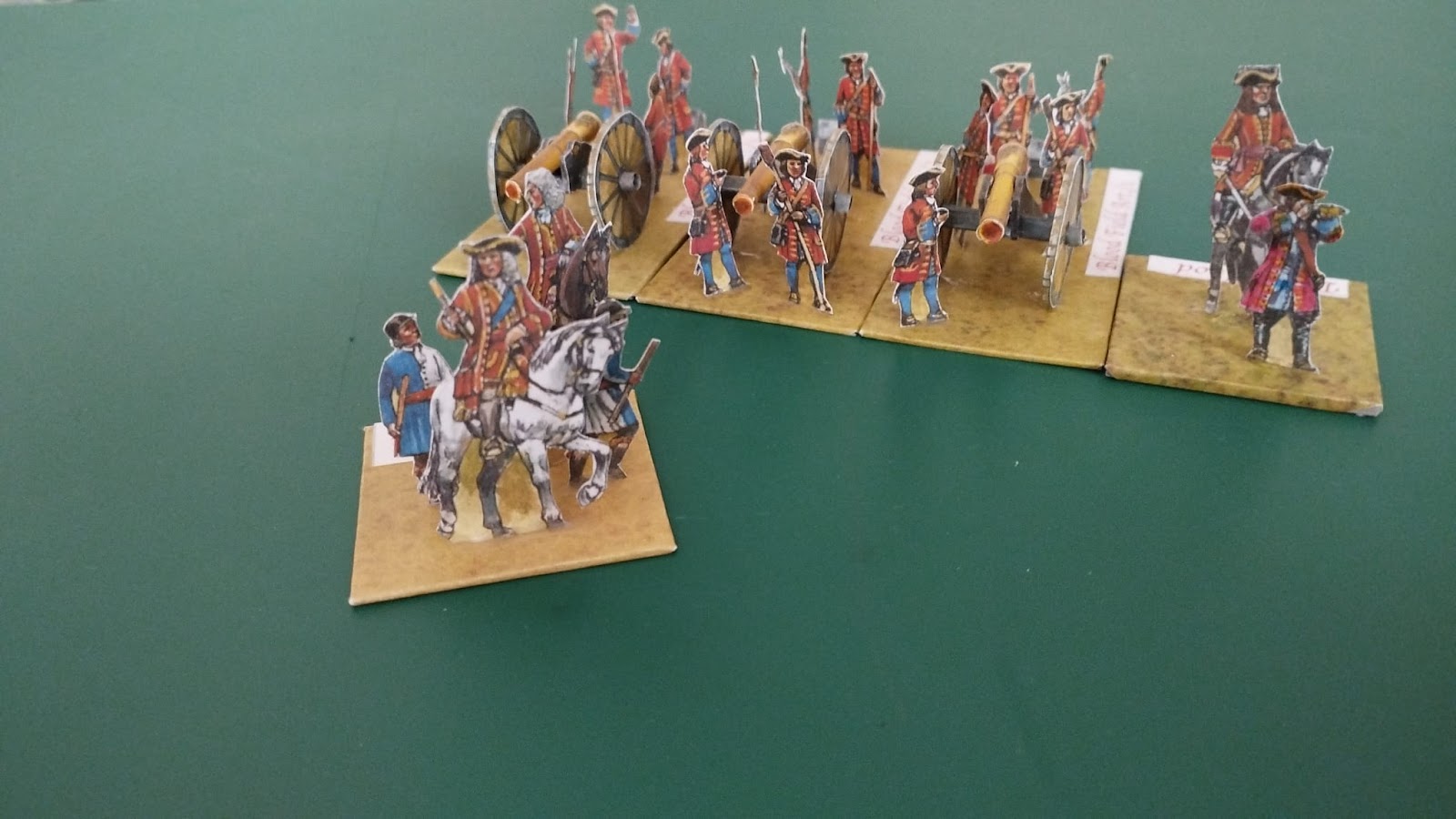

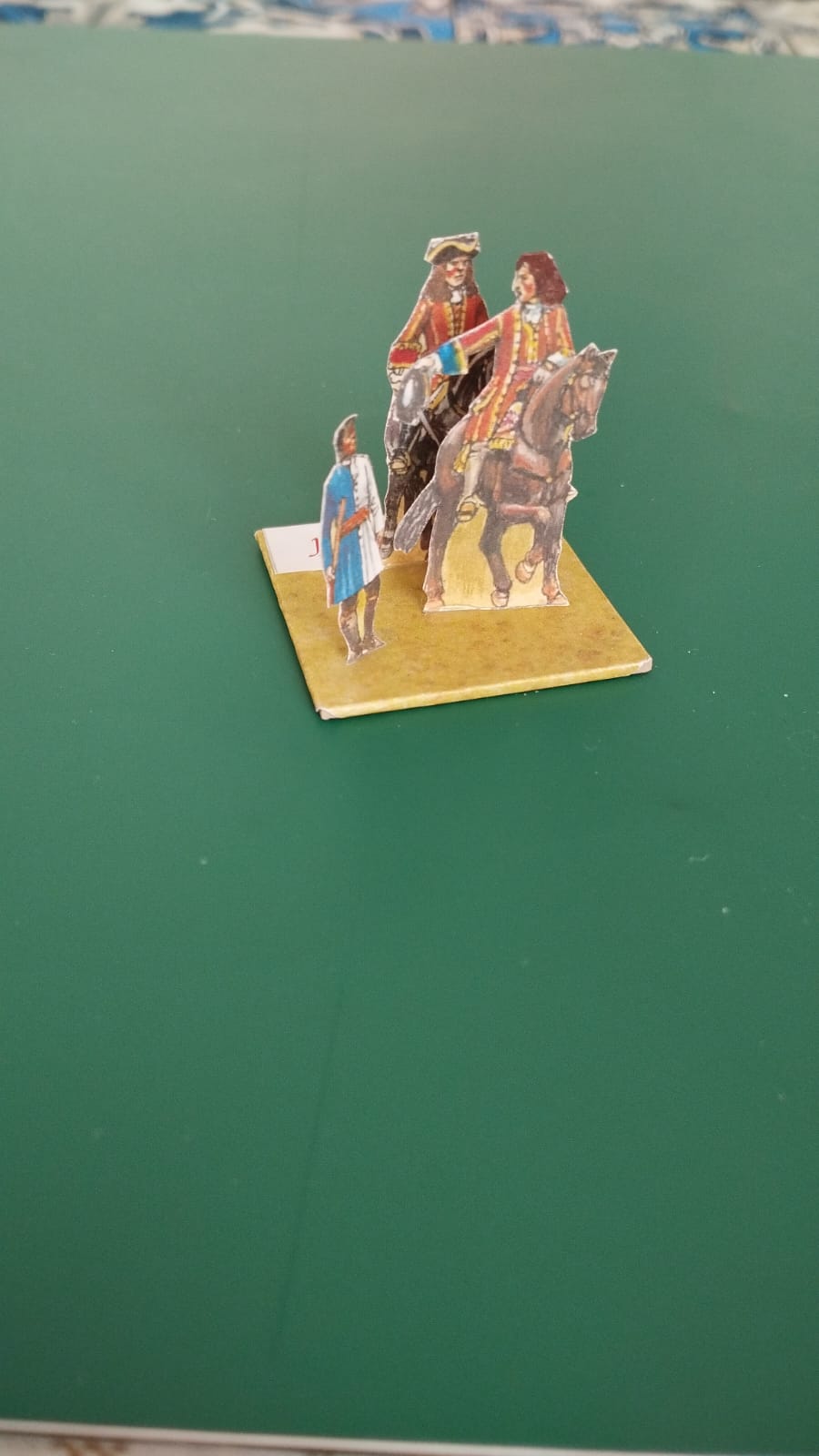
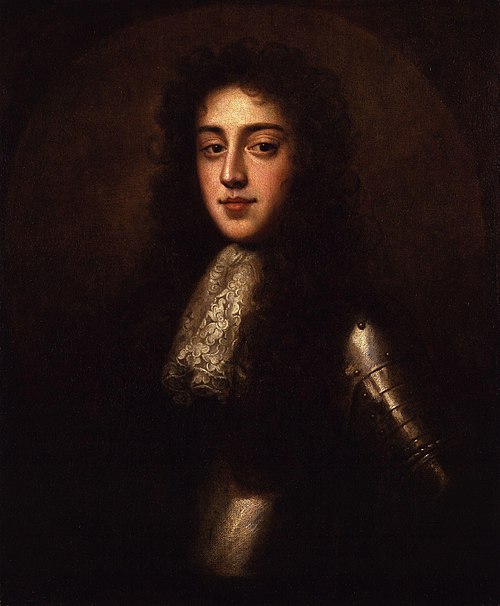
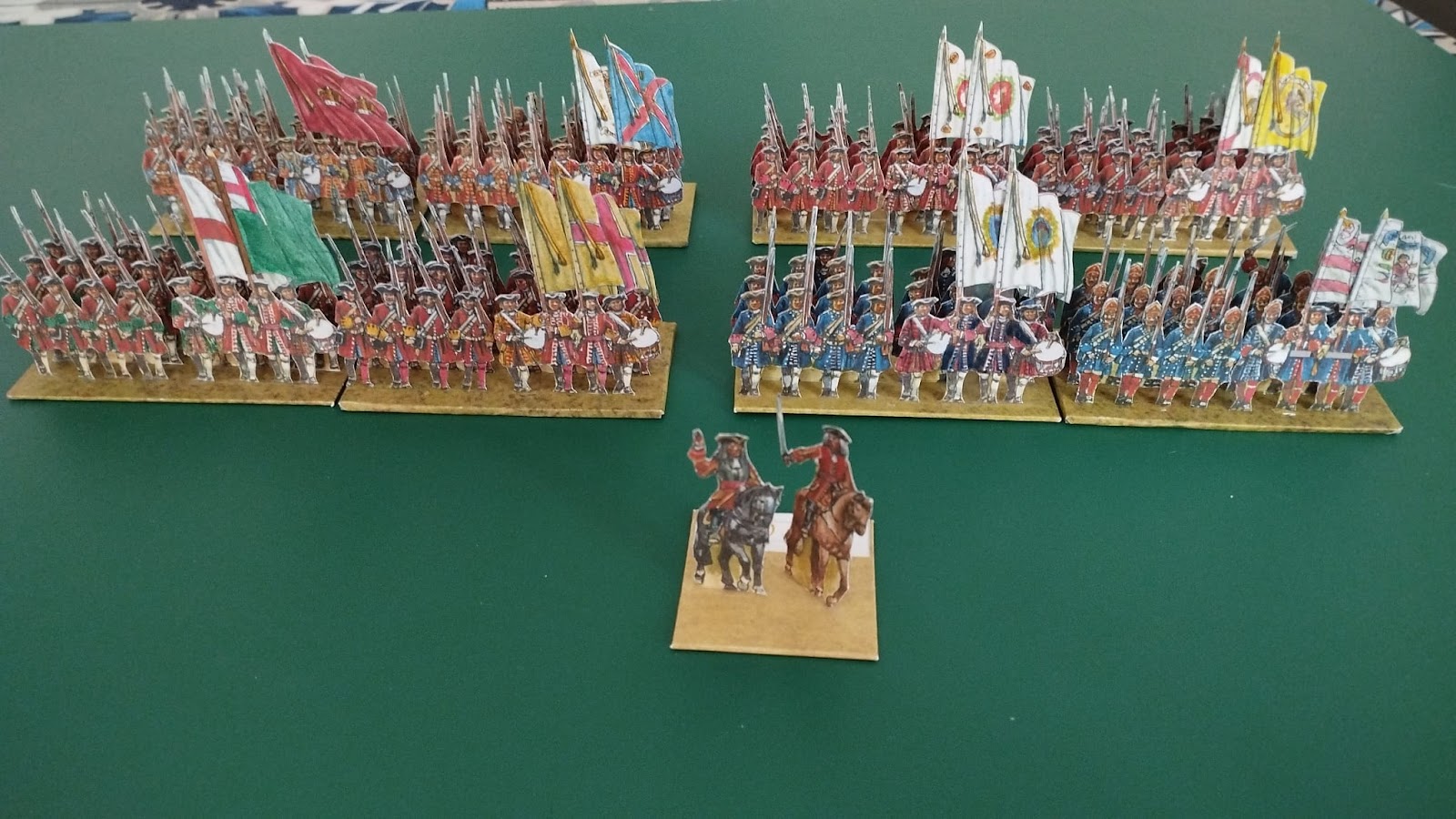

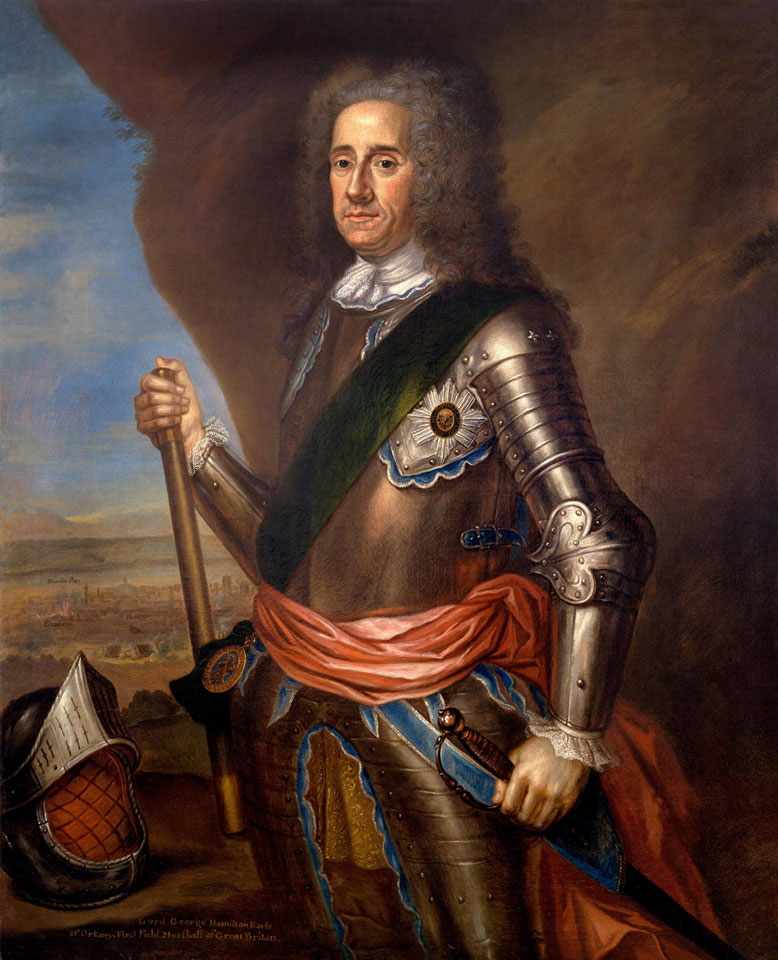
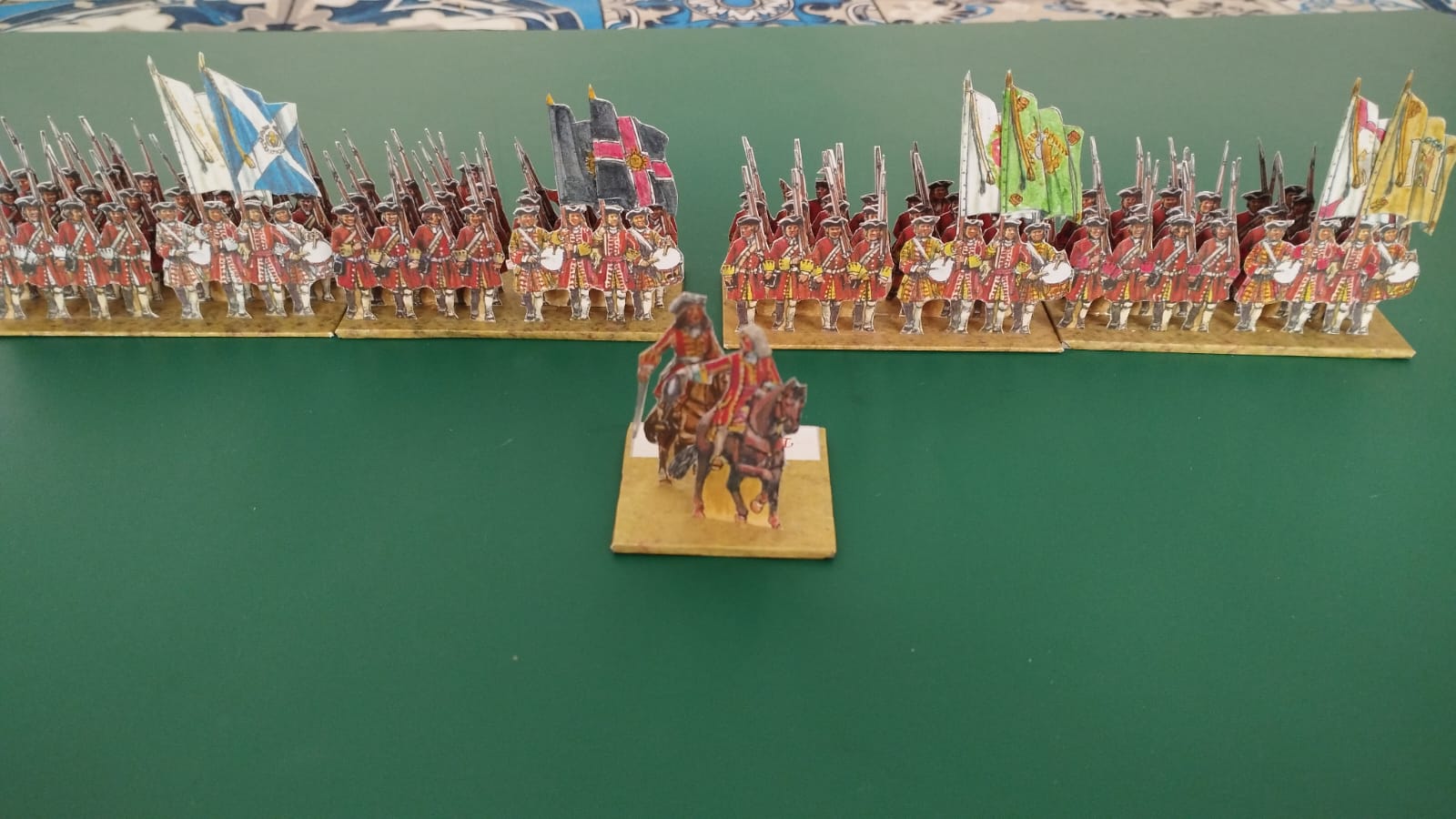
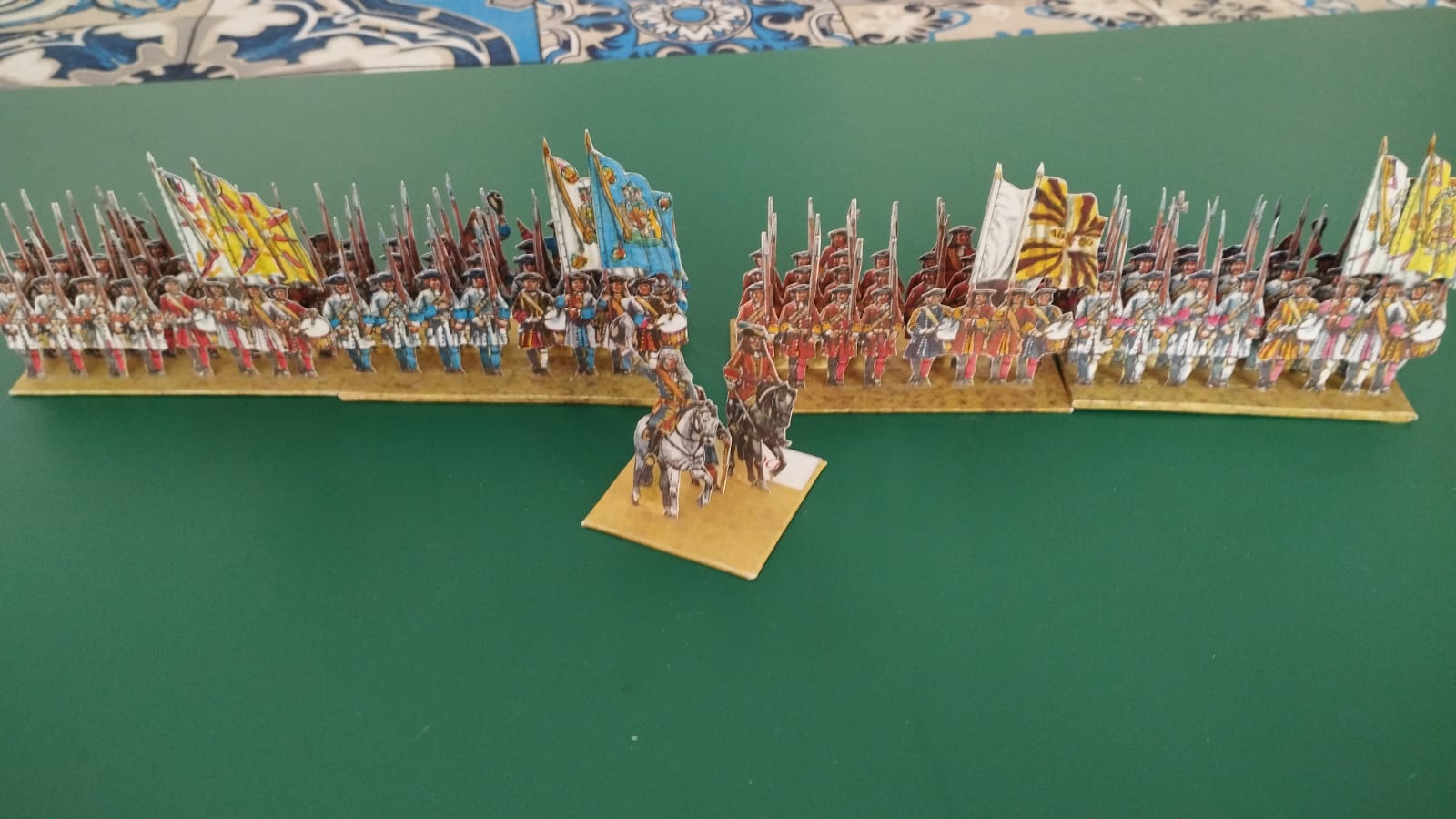
1 comment:
The previous general comment applies here.
You also have the Infantry and Cavalry in 2 seperate commands which is not correct but may be for rules reasons. The real commands were mixed.
As with the previous message there were no battalion guns and at least most of the infantry used platoon fire. We don't know if the units in Seckendorff's brigade and individual 'minor' states units elsewhere, like the Mecklenburg unit, also used it but it seems very likely they did. It seems to have been the standard used in the Anglo Dutch armies by all contingents.
On the cavalry what you call the 'Right Division' is mainly cavalry using German tactics but 3 of the units (5 of the 48 squadrons) were Dutch. The Danish cavalry could also be too large. Obscure Battles gives 26 squadrons at more or less full strength but there were 21 squadrons at reduced strength.
On artillery the combined army had 60 guns in total.
Six 9pdrs which were supporting the attack on Oberglauheim. Ten 5 pdrs and 4 howitzers which were supporting the attack on Blenheim. Forty 3 pdrs of which 24 were with the Anglo Dutch and 16 with the 'Imperialists'.
Post a Comment